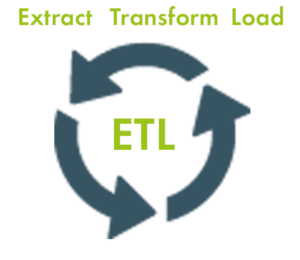
Selecting a Data Lake ETL Platform? Here Are 6 Questions to Ask

(Alexander Supertramp/Shutterstock)
Not all data lakes are created equal. If your organization wants to adopt a data lake solution to simplify and more easily operate your IT infrastructure and store enormous quantities of data without requiring extended data transformation, then go for it.
But before you do, understand that simply dumping all your data into object storage such as AWS S3 doesn’t exactly mean you will have a working data lake.
The ability to use that data in analytics or machine learning requires converting that raw information into organized datasets you can use for SQL queries, and this can only be done via extract-transform-load (ETL) flows.
Data lake ETL platforms are available in a full range of options – from open-source to managed solutions to custom-built. Whichever tool you select, it’s important to differentiate data lake ETL challenges from traditional database ELT demands – and seek the platform that overcomes these obstacles.
Ask yourself which ETL solution:
1. Effectively Conducts Stateful Transformations
Traditional ETL frameworks allow for stateful operations like joins and aggregations to enable analysts to work with data from multiple sources; this is difficult to implement with a decoupled architecture.
Stateful transformations can occur by relying on extract-load-transform (ELT) – i.e., sending data to an “intermediary” database and using the database’s SQL, processing power and already amassed historical data. After transformation, the information is loaded into the data warehouse tables.
Data lakes, aiming to reduce cost and complexity by avoiding decoupled architecture, cannot depend on databases for every activity. You’ll need to look for an ETL tool that can conduct stateful transformations in-memory and needs no additional database to sustain joins and aggregations.
2 Extracts Schema from Raw Data
Organizations customarily use data lakes as a storehouse for raw data in a structured or semi-structured arrangement vs databases, which are predicated on structured tables. This poses numerous challenges.
One, in order to query data, can the data lake ETL tool draw out a schema (without which querying is not possible) from the raw data – and bring it up to date as changes in data and data structure come about? And two — this is an ongoing struggle — can the ETL tool effectively make queries with nested data?
3 Improves Query Performance Via Optimized Object Storage
Have you tried to read raw data straight from a data lake? Unlike using a database’s optimized file system that quickly sends back query results, doing the same operation with a data lake can be quite frustrating performance-wise.
To get optimal results, your ETL framework should continually store data in columnar formats and merge small files to the 200mb-1gb range. Unlike traditional ELT tools that only need to write the data once to its target database, data lake ETL should support the ability to write multiple copies of the same data based on the queries you will want to run and the various optimizations required for your query engines to be performant.
4 Easily Integrates with the Metadata Catalog
You’ve chosen the data lake approach for its flexibility — store large quantities if data now but analyze it later — and the ability to handle a wide range of analytics use cases. Such an open architecture should keep metadata separate from the engine that queries it, so you can easily change these query engines or use several simultaneously for the same data.
This means the data lake tool you select should reinforce this open architecture, i.e., be seamlessly merged with the metadata catalog. This allows the metadata to be easily “queryable” by various services because it is both stored in the catalog and still dovetails with every adjustment in schema, partition, and location of objects.
5 Replays Historical Data
Say you wanted to test a hypothesis by looking at stored data on a historical basis. This is difficult to accomplish with the traditional database option, where data is stored in a mutable condition, and in which running such a query could be prohibitive in terms of cost, stress, and tension between operations and analysis.
It’s easy to do with a data lake. In data lakes, stored raw data remains continuously available – it only transformed after extraction. Therefore, having a data lake allows you got “travel back in time,” seeing the exact state of the data as it was collected.
“Traditional” databases don’t allow for that, as the data is only stored in its transformed state.
6 Updates Tables Periodically
Data lakes, unlike databases that allow you to update and make deletions to tables, contain partitioned files that enable an append or add-only feature. If you want to store transactional data, implement change data capture in the data lake, or delete particular data for GDPR compliance, you’ll have difficulty doing so.
Make sure that the data lake ETL tools you choose have the ability to sidestep this obstacle. Your solution should be able to allow upserts, a system that lets you insert new records or update existing ones, in the storage layer and in the output tables.
About the author: Ori Rafael is the CEO and co-founder of Upsolver, a provider of a self-service data lake ETL platform that bridges the gap between data lakes and data consumers. Ori has worked in IT for nearly two decades and has an MBA from Tel Aviv University.
Related Items:
Merging Batch and Stream Processing in a Post Lambda World
June 16, 2025
- Cloudera Kicks Off EVOLVE25 Global Events Series to Showcase the Future of AI
- Operant AI Launches MCP Gateway to Secure Runtime AI Agent Workflows
- BigID Introduces 1st Data-Driven Assessment for AI Governance and Third-Party AI Use
- Tencent Cloud Backs European AI Growth with Multi-Cloud and Ecosystem Strategy
- Linux Foundation Announces 2025 Open Source Summit Europe Schedule for Amsterdam
- Bloomberg Integrates Natural Language Search Across Terminal Research Content
June 13, 2025
- PuppyGraph Announces New Native Integration to Support Databricks’ Managed Iceberg Tables
- Striim Announces Neon Serverless Postgres Support
- AMD Advances Open AI Vision with New GPUs, Developer Cloud and Ecosystem Growth
- Databricks Launches Agent Bricks: A New Approach to Building AI Agents
- Basecamp Research Identifies Over 1M New Species to Power Generative Biology
- Informatica Expands Partnership with Databricks as Launch Partner for Managed Iceberg Tables and OLTP Database
- Thales Launches File Activity Monitoring to Strengthen Real-Time Visibility and Control Over Unstructured Data
- Sumo Logic’s New Report Reveals Security Leaders Are Prioritizing AI in New Solutions
June 12, 2025
- Databricks Expands Google Cloud Partnership to Offer Native Access to Gemini AI Models
- Zilliz Releases Milvus 2.6 with Tiered Storage and Int8 Compression to Cut Vector Search Costs
- Databricks and Microsoft Extend Strategic Partnership for Azure Databricks
- ThoughtSpot Unveils DataSpot to Accelerate Agentic Analytics for Every Databricks Customer
- Databricks Eliminates Table Format Lock-in and Adds Capabilities for Business Users with Unity Catalog Advancements
- OpsGuru Signs Strategic Collaboration Agreement with AWS and Expands Services to US
- What Are Reasoning Models and Why You Should Care
- The GDPR: An Artificial Intelligence Killer?
- Fine-Tuning LLM Performance: How Knowledge Graphs Can Help Avoid Missteps
- It’s Snowflake Vs. Databricks in Dueling Big Data Conferences
- Inside the Chargeback System That Made Harvard’s Storage Sustainable
- Snowflake Widens Analytics and AI Reach at Summit 25
- Top-Down or Bottom-Up Data Model Design: Which is Best?
- Why Snowflake Bought Crunchy Data
- Change to Apache Iceberg Could Streamline Queries, Open Data
- Stream Processing at the Edge: Why Embracing Failure is the Winning Strategy
- More Features…
- Mathematica Helps Crack Zodiac Killer’s Code
- It’s Official: Informatica Agrees to Be Bought by Salesforce for $8 Billion
- AI Agents To Drive Scientific Discovery Within a Year, Altman Predicts
- Solidigm Celebrates World’s Largest SSD with ‘122 Day’
- DuckLake Makes a Splash in the Lakehouse Stack – But Can It Break Through?
- The Top Five Data Labeling Firms According to Everest Group
- Who Is AI Inference Pipeline Builder Chalk?
- ‘The Relational Model Always Wins,’ RelationalAI CEO Says
- IBM to Buy DataStax for Database, GenAI Capabilities
- VAST Says It’s Built an Operating System for AI
- More News In Brief…
- Astronomer Unveils New Capabilities in Astro to Streamline Enterprise Data Orchestration
- Yandex Releases World’s Largest Event Dataset for Advancing Recommender Systems
- Astronomer Introduces Astro Observe to Provide Unified Full-Stack Data Orchestration and Observability
- BigID Reports Majority of Enterprises Lack AI Risk Visibility in 2025
- Databricks Unveils Databricks One: A New Way to Bring AI to Every Corner of the Business
- MariaDB Expands Enterprise Platform with Galera Cluster Acquisition
- Snowflake Openflow Unlocks Full Data Interoperability, Accelerating Data Movement for AI Innovation
- Databricks Announces 2025 Data + AI Summit Keynote Lineup and Data Intelligence Programming
- Databricks Announces Data Intelligence Platform for Communications
- FICO Announces New Strategic Collaboration Agreement with AWS
- More This Just In…


























